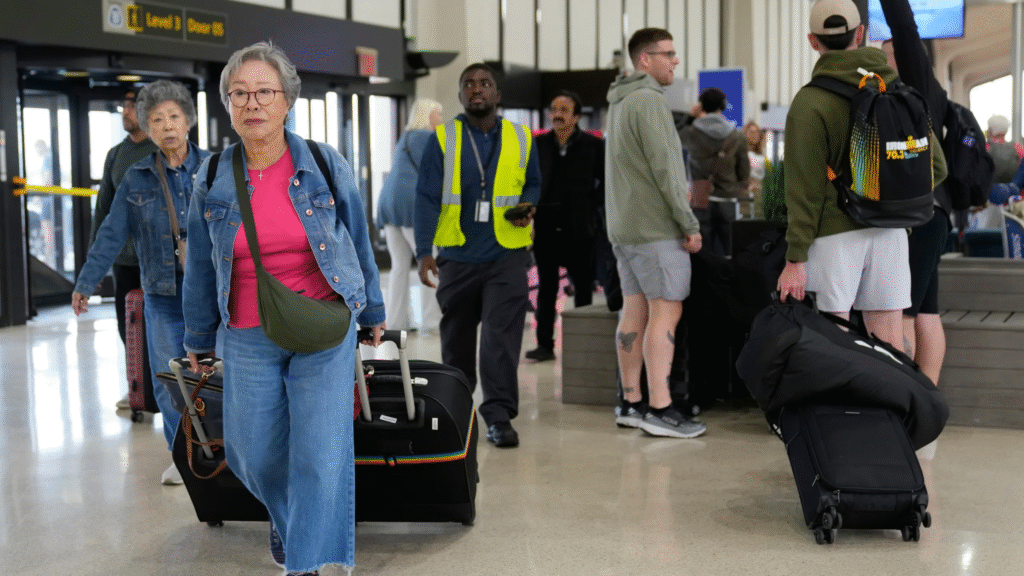Newark The recent communications failure that paralyzed operations at Newark Liberty International Airport is being described by a veteran air traffic controller as one of the most dangerous events imaginable in modern aviation.
The April 28 breakdown at the Philadelphia Air Route Traffic Control Center, which now oversees Newark’s airspace, triggered a cascading disruption, grounding over a thousand flights and reigniting debate over the fragility of the U.S. air traffic control infrastructure.
Newark According to the controller, who spoke on condition of anonymity, the incident posed a major risk not only to airline operations but to passenger safety. “We lost radar. We lost radio contact. For that brief moment, we had no eyes and no ears. That’s catastrophic in this business.”
A Fragile, Outdated System
Newark’s radar data is currently being routed through a remote system operated from Philadelphia, a setup that one industry source bluntly described as functioning like “a long extension cord.” This configuration leaves the system prone to disruption from even minor equipment failures.
The root cause of the outage was traced to a single outdated copper telecommunications cable—an infrastructure component long considered obsolete in high-bandwidth systems. This cable carried both radar data and radio communications. Without redundancy, a single point of failure can effectively blind and deafen air traffic controllers tasked with managing aircraft in some of the most congested airspace in the world.
Real-Time Danger in the Skies
When the failure occurred, multiple aircraft were actively being guided for landing and departure around Newark. Approximately 15 to 20 planes were affected by the sudden loss of communication and radar visibility, according to Flightradar24, a flight tracking platform. Audio recordings from the day highlight the growing confusion as pilots attempted to understand what was happening.
The pilot radioed to LaGuardia’s approach control. LaGuardia quickly instructed the plane to turn north and climb to avoid potential collisions.

Similar chaos played out over five minutes of lost communication in another incident back in November 2023, revealing that such failures are not isolated. In that event, a United Airlines pilot described the radio silence mid-flight as “like he’s not talking to anyone,” highlighting the disorientation such failures cause in the cockpit.
FAA’s Immediate Response
In the wake of this alarming episode, the Federal Aviation Administration (FAA) has pledged swift corrective action. The agency announced a plan to install three new high-bandwidth fiberoptic telecommunications connections between New York and Philadelphia, intended to replace the obsolete copper cable system. These modern connections will offer greater speed, bandwidth, and reliability.
A temporary backup communication system will also be implemented during the transition period to ensure there is at least one alternative path available in case of another outage.
Crucially, the FAA revealed that the Philadelphia facility will eventually be upgraded into a standalone operational hub, removing its dependence on radar and communication feeds from New York altogether. This structural reorganization is aimed at improving resilience and eliminating single points of failure in critical systems.

The Human Impact: Trauma and Stress
“You’re essentially flying blind,” one controller said. “It’s like being told to drive down the freeway with a blindfold on and then being expected to instantly know where everything is when it’s lifted. It’s disorienting and terrifying.”
Following the outage, five FAA employees—including a supervisor, three controllers, and a trainee—took up to 45 days of trauma leave. The episode, while brief, had such a psychological impact that some of those involved are still recovering.
Longstanding Warnings Ignored
Controllers say they’ve been warning FAA officials and lawmakers about the fragility of their tools for years. “And every time we’re ignored, it gets more exhausting. This job demands total focus, but how can we concentrate when we’re constantly wondering if the system will fail again?”
Speaking last Friday, he admitted the national system is operating on technology that is far out of date. “We’re still using floppy disks. We’re still relying on copper wires.
Duffy also noted that during the April 28 failure, the backup line—designed to serve as a failsafe—failed to activate automatically, a critical flaw that exacerbated the situation.
Quiet Heroes Amid Systemic Failure
Despite the system’s shortcomings, aviation analysts and industry insiders have praised the quick thinking and professionalism of the controllers involved. Every day they prevent disaster, and this time was no different.”
O’Brien emphasized that no amount of training can fully prepare someone for a total communication and radar blackout. “These people are asked to do the impossible in a system that is practically engineered to break down,” he said. “And still, they manage to keep planes flying and passengers safe.
The Path Forward
The FAA’s announced upgrades represent a step in the right direction, but experts warn that more systemic reform is needed to modernize the entire U.S. air traffic control system, not just patch its most glaring weaknesses.
Until those changes are made, many controllers fear that outages like the one on April 28 are not the exception but a glimpse into what could happen again—and possibly with more severe consequences.
“This was a warning,” the anonymous controller concluded.
